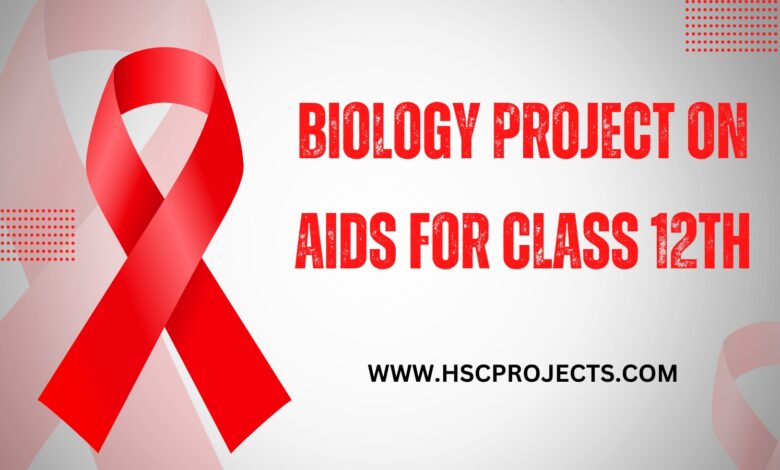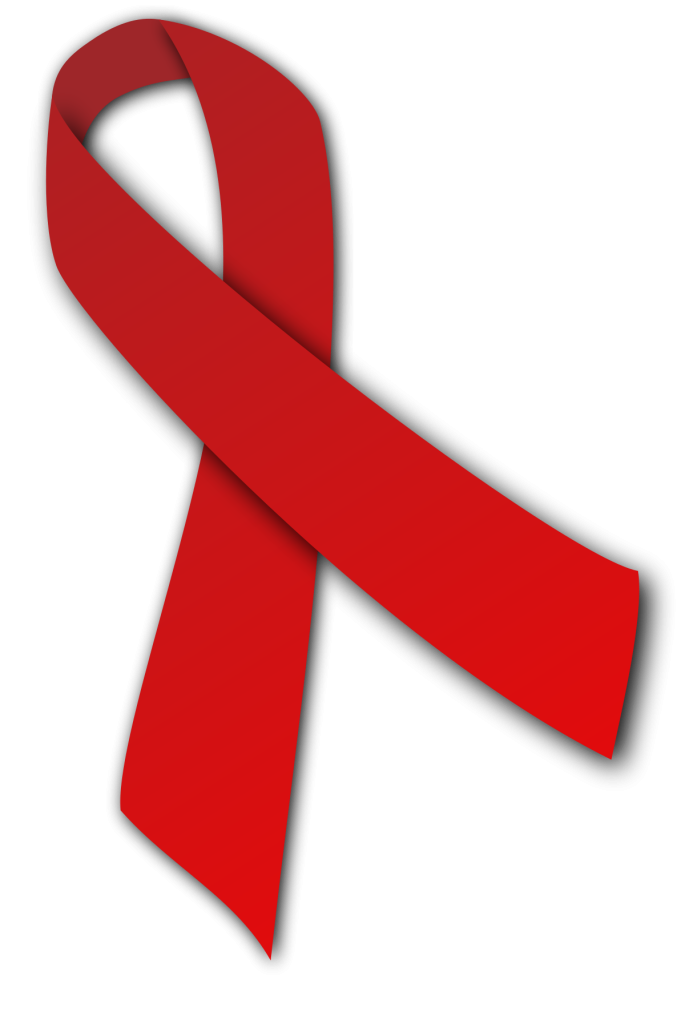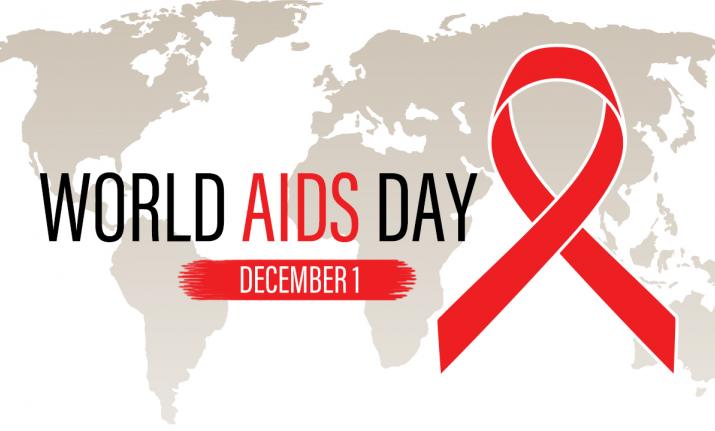
Biology Project On AIDS For Class12
AN OVERVIEW OF AIDS
The Human Immunodeficiency Virus (HIV) is the medical illness known as Acquired Immune Deficiency Syndrome (AIDS). The immune system is attacked by HIV and destroyed, making the body susceptible to numerous infections and disorders. Since its discovery in the 1980s, AIDS has claimed millions of lives, making it one of the worst pandemics in human history.
Blood, semen, vaginal fluids, and breast milk are just a few of the biological fluids that can spread AIDS. It can be passed from woman to kid through pregnancy, childbirth, and breastfeeding, as well as through sexual contact, sharing needles, blood transfusions, and blood transfusions.
Antiretroviral therapy (ART) can greatly reduce the spread of the illness and enhance the quality of life for HIV-positive individuals, despite the fact that there is no known cure for AIDS. It’s critical to spread knowledge about AIDS, encourage preventative efforts, and provide assistance to people who are afflicted.

WHAT IS HIV?
The retrovirus known as HIV targets the immune system by infecting and destroying CD4+ T-cells, a subset of white blood cells that aids in the defence against infections. As a result of HIV’s primary immune system-targeting behaviour, significant immunological deficiencies and the emergence of AIDS may result.
Blood, semen, vaginal fluids, and breast milk are just a few of the biological fluids that can spread HIV. It can be passed from woman to kid through pregnancy, childbirth, and breastfeeding, as well as through sexual contact, sharing needles, blood transfusions, and blood transfusions.
Many people may not show any symptoms after the initial infection or may show flu-like symptoms. Nevertheless, HIV can stay in the body for years without manifesting any symptoms, during which time the immune system can continue to be harmed.
Although there is presently no cure for HIV, antiretroviral medication (ART) can dramatically halt the disease’s course and enhance the lives of those who are infected. To stop the virus from spreading, it is crucial to encourage HIV testing, prevention, and education.
DIFFERENCE BETWEEN HIV AND AIDS

Although they are not the same thing, HIV and AIDS are frequently used interchangeably. AIDS is a disease that arises from severe HIV infection, whereas HIV is a virus that targets the immune system.
HIV can remain in the body for years without manifesting any symptoms, during which time the immune system can continue to be harmed. Once the immune system has been badly damaged, AIDS may develop in the person. An immune system that is compromised due to AIDS makes a person more vulnerable to infections and illnesses.
A blood test that finds the presence of the virus in the blood can be used to diagnose HIV. Contrarily, AIDS is identified through the detection of certain opportunistic infections and a highly compromised immune system.
The progression of HIV and the onset of AIDS can be considerably slowed down by antiretroviral medication (ART). However, neither HIV nor AIDS are now curable. Promoting prevention, information, and assistance for people who are infected with the virus is essential.
TRANSMISSION
Blood, semen, vaginal fluids, and breast milk are among the biological fluids most commonly used in the transmission of HIV. The most popular transmission methods are as follows:
HIV can be spread through unprotected sexual intercourse, such as vaginal, anal, or oral sex with a partner who is infected.
Sharing Needles: When using intravenous drugs, sharing needles or syringes with someone who is HIV-positive might spread the disease.
HIV can be spread during blood transfusions by obtaining contaminated blood or blood products.
HIV can be passed from a mother who is infected to her unborn child during pregnancy, childbirth, or breastfeeding.
It’s crucial to remember that incidental contact, such as hugging, kissing, or sharing of utensils, does not transmit HIV. By using safe methods of sexual contact, avoiding sharing needles, and checking blood and blood products for HIV, the risk of transmission can be considerably decreased.
EFFECTS OF HIV
White blood cells known as CD4+ T-cells, which aid in the defence against infections, are infected and killed by HIV, which targets the immune system. The immune system deteriorates throughout time, making a person more vulnerable to infections and illnesses.
Depending on the individual, the effects of HIV might be minimal or severe. Within the first several weeks following infection, some people may not show any symptoms while others may show flu-like symptoms. Without treatment, HIV can evolve into AIDS over time, which is characterised by an immune system that is severely compromised as well as the emergence of opportunistic infections and malignancies.
COMMON HIV SIDE EFFECTS INCLUDE
Opportunistic Infections: People with HIV are more prone to catching numerous illnesses, such as pneumonia, tuberculosis, and several types of cancer.
Neurological Disorders: HIV can also have an impact on the nerve system, which can result in depression, cognitive decline, and other neurological problems.
Skin Disorders: Various skin conditions, such as rashes, blisters, and fungus infections, can be brought on by HIV.
Other Complications: HIV can also result in other consequences, including wasting syndrome, which causes the person to lose a lot of weight and have atrophying muscles, as well as cardiovascular disease and kidney disease.
Antiretroviral therapy (ART) can dramatically halt the spread of HIV and postpone the onset of AIDS, lowering the risk of complications and enhancing the quality of life for those infected with the virus.
HIV SYMPTOMS
Some people may not experience any HIV symptoms at all, and symptoms might vary from person to person. HIV, however, can generally result in the following signs and symptoms:
Flu-like Symptoms: such as fever, exhaustion, sore throat, and body aches, can appear in some persons within the first few weeks after infection.
Rash: The chest, back, and face are the most common places for an HIV-related skin rash to appear.
Swollen Lymph Nodes: HIV can produce enlarged lymph nodes, particularly in the armpits, groyne, and neck.
Night Sweats: Night sweats are a type of excessive nighttime perspiration that can soak the bed linens. HIV can cause night sweats.
Fatigue: HIV can lead to fatigue, which is a state of acute exhaustion and tiredness that does not go away with rest.
Weight Loss: Unintentional weight loss brought on by HIV can often account for more than 10% of a person’s body weight.
It is crucial to remember that these symptoms can also be brought on by other diseases, and a blood test is the only way to positively identify an HIV infection. Antiretroviral therapy (ART) and early diagnosis can greatly enhance the long-term prognosis for HIV-positive individuals.
AIDS PREVENTION
In order to slow the spread of AIDS, it is essential to prevent HIV transmission. Here are several strategies to stop HIV from spreading:
Practice Safe Sex: Use condoms to limit the risk of HIV transmission during every sexual activity, including oral, anal, and vaginal sex.
Avoid Sharing Needles: Don’t let people use your needles or other injectable supplies.
Get Tested: Regularly test yourself for HIV, particularly if you engage in high-risk activities.
Use Pre-Exposure Prophylaxis (PrEP): Use Pre-Exposure Prophylaxis (PrEP) to lessen the risk of HIV transmission. PrEP is a drug that can be taken every day.
Use post-exposure prophylaxis (PEP): PEP is a drug that can be used to lessen the risk of infection within 72 hours following a probable HIV encounter.
Screening Blood and Blood Products: Checking Blood and Blood Products for HIV Before a Transfusion, check blood and blood products for HIV.
Prevent Mother-to-Child Transmission: Antiretroviral therapy (ART) should be given to HIV-positive pregnant women in order to stop mother-to-child transmission of the virus.
Educate Yourself and Others: Become knowledgeable about HIV/AIDS, including how it spreads and how to avoid getting it.
We can drastically minimise the spread of HIV and ultimately stop the onset of AIDS by implementing these preventive strategies.

HIV DIAGNOSIS
A blood test that looks for HIV antibodies in the blood can be used to diagnose HIV. The most widely used test is the ELISA, or enzyme-linked immunosorbent assay, which can identify HIV antibodies in blood as early as a few weeks after infection.
A Western blot test is used to confirm the presence of HIV antibodies if the ELISA test results are positive. The genetic makeup of HIV can sometimes be found in the blood using a nucleic acid test (NAT), which can find the virus much earlier than antibody tests.
In order to assure reliable findings, it is advised to get tested three months after a probable HIV encounter because it can take up to three months for HIV antibodies to form in the blood.
HIV testing is private and available in a number of settings, including medical centres, hospitals, and community-based organisations. In order to help patients deal with the emotional and psychological impacts of receiving an HIV diagnosis, counselling and support services are frequently offered.
ART, OR ANTIRETROVIRAL THERAPY
Human immunodeficiency virus (HIV) suppression is achieved through the use of a cocktail of drugs known as antiretroviral therapy (ART). ART slows the course of HIV and helps to halt the development of AIDS by preventing the virus from multiplying and reducing the amount of virus in the bloodstream.
As part of ART, patients must take three or more antiretroviral medications from various kinds, such as integrase inhibitors, protease inhibitors, non-nucleoside reverse transcriptase inhibitors, and nucleoside reverse transcriptase inhibitors. The combination of these medications is referred to as highly aggressive antiretroviral therapy (HAART).
The long-term prognosis for HIV-positive individuals can be considerably improved by using ART, which is very successful at lowering the amount of virus in the bloodstream. People with HIV can live long, healthy lives and have a lower chance of spreading the infection to others with early diagnosis and treatment.
It is significant to remember that ART calls for careful adherence to the medication schedule and is a lifelong treatment. Nausea, vomiting, diarrhoea, lethargy, and headaches are possible ART side effects, however these are frequently treatable with medication changes or dietary modifications.
New Hiv Treatment Developments
There have been a number of improvements in HIV therapies during the past few years, including:
Long-Acting Antiretroviral Therapy (LAART): Rather than taking daily pills, long-acting antiretroviral therapy (LAART) entails receiving injections of antiretroviral medication once every several months. This strategy may help to increase drug adherence and lessen the number of clinic visits.
Two-Drug Regimens: Historically, HIV treatment has included combining three or more medications, but more recent two-drug regimens have demonstrated to be similarly successful in suppressing the virus, with perhaps fewer adverse effects.
Gene Editing: By focusing on and eliminating the virus from infected cells, gene editing tools like CRISPR/Cas9 have showed promising results in laboratory tests for potentially treating HIV.
Neutralising Antibodies: As a potential HIV therapy option, researchers are looking at the use of neutralising antibodies, which the immune system naturally produces to fight HIV.
HIV vaccines: Several clinical trials for HIV vaccines that may prevent or treat HIV infection are now taking place.
Overall, these advancements raise hopes for new and better HIV treatments that might lessen the severity of the disease and enhance the quality of life for those who are HIV positive.
GLOBAL AIDS DAY

Every year on December 1st, World AIDS Day is commemorated to spread awareness of HIV/AIDS and to offer support for those who are afflicted with the condition. Since it was originally commemorated in 1988, the day has grown to be a global celebration, with organisations, governments, and people from all over the world taking part in celebrations and festivities.
Every year, World AIDS Day has a different subject; in the past, it has had the following slogans: “Global solidarity, shared responsibility,” “Communities make the difference,” and “Ending the HIV/AIDS epidemic: Resilience and impact.” The day provides an opportunity to mourn those who have died from AIDS, to honour people who are HIV-positive, and to draw attention to the advancements made in the fight against the disease.
On World AIDS Day, activities include HIV testing and counselling, community gatherings and marches, fund-raising activities, and awareness-raising efforts for HIV prevention and treatment. The day provides an opportunity to promote policies that protect HIV-positive people as well as increased financing for programmes that fight the disease.
World AIDS Day serves as a wake-up call to people and communities to unite in the battle against the illness and strive for a world free of HIV/AIDS as well as a reminder that HIV/AIDS remains a significant public health concern.
CONCLUSION
In conclusion, the prevalence of HIV/AIDS, which affects millions of people globally, continues to be a serious global health issue. However, there remains hope for a world free of HIV/AIDS thanks to advancements in HIV prevention, diagnosis, and treatment. Pre-exposure prophylaxis (PrEP), condom use, and HIV testing are all effective preventative methods that can assist to lower the risk of HIV transmission. Antiretroviral therapy (ART) and early diagnosis and treatment can greatly improve long-term outcomes for HIV-positive individuals and lower the risk of transmission to others.
Even while the fight against HIV/AIDS has achieved significant strides, there is still much to be done, especially in tackling the social and economic injustices that contribute to the disease’s disproportionately negative effects on marginalised populations. World AIDS Day is a crucial reminder that more must be done to prevent and treat HIV/AIDS, including raising awareness, funding, and taking action. We can keep moving forward towards a time without HIV/AIDS by cooperating.
CERTIFICATE OF COMPLETION
[Your Name][Your School/College Name]This is to certify that I, [Your Name], a student of Class 12 at [Your School/College Name], have successfully completed my Biology Project on “An Overview of AIDS” with great dedication and effort.
During the course of this project, I delved into the vast realm of HIV and AIDS, understanding their impacts on the immune system and the human body. I researched various aspects, including the transmission, symptoms, effects, prevention, diagnosis, and treatment of HIV/AIDS. Through comprehensive research, I gained in-depth knowledge about the virus, its transmission methods, and the measures to prevent its spread.
I have learned about the importance of raising awareness about HIV/AIDS and promoting preventative efforts to protect individuals from this devastating disease. The project has allowed me to comprehend the significance of timely diagnosis and antiretroviral therapy (ART) in managing HIV infections and improving the quality of life for those affected.
In addition to exploring existing treatments, I also had the opportunity to study recent advancements in HIV therapy, such as long-acting antiretroviral therapy (LAART), gene editing, and the potential of neutralising antibodies. These innovative approaches have instilled hope for a brighter future in the fight against HIV/AIDS.
Furthermore, I dedicated a section of the project to discuss World AIDS Day, an essential global event observed on December 1st annually. Through this section, I recognized the significance of solidarity and collective efforts in battling HIV/AIDS and promoting awareness about the disease.
I am grateful for the guidance and support provided by my Biology teacher [Teacher’s Name], who motivated and assisted me throughout this project. Their encouragement and valuable insights have played a significant role in shaping the project’s success.
I sincerely hope that this project will contribute to spreading knowledge about HIV/AIDS and inspire others to join in the global efforts to combat this pandemic. I firmly believe that through education, prevention, and support, we can create a world free from the burden of HIV/AIDS.
Once again, I express my heartfelt gratitude to everyone who supported me in completing this project, and I am honored to have been able to present my findings on this critical topic.
Date: [Date]Place: [Your City/Town]
[Your Signature]
In order to download the PDF, You must follow on Youtube. Once done, Click on Submit
Follow On YoutubeSubscribed? Click on Confirm
Download Biology Project On AIDS For Class12 PDF






